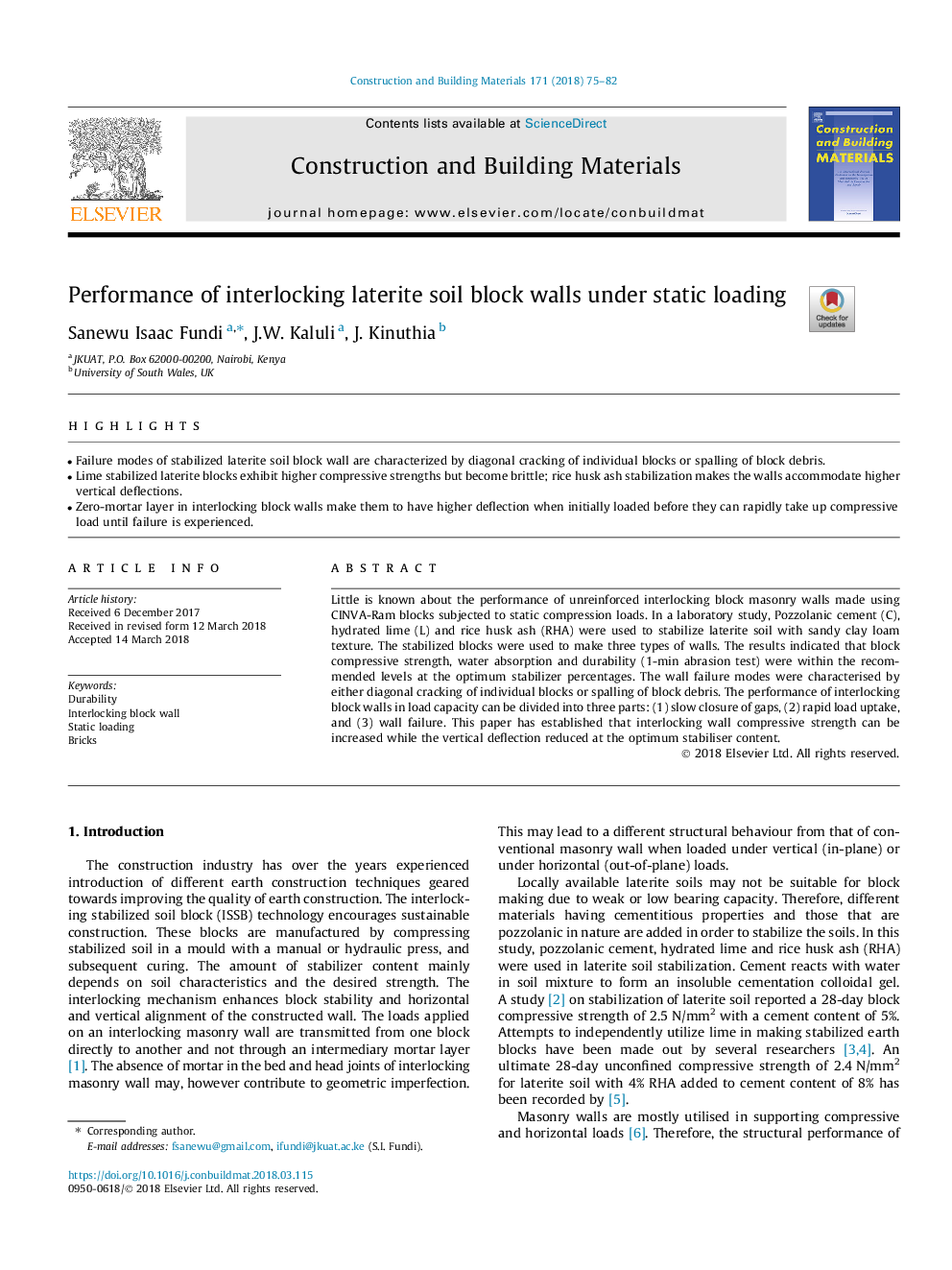| Article ID | Journal | Published Year | Pages | File Type |
|---|---|---|---|---|
| 6713885 | Construction and Building Materials | 2018 | 8 Pages |
Abstract
Little is known about the performance of unreinforced interlocking block masonry walls made using CINVA-Ram blocks subjected to static compression loads. In a laboratory study, Pozzolanic cement (C), hydrated lime (L) and rice husk ash (RHA) were used to stabilize laterite soil with sandy clay loam texture. The stabilized blocks were used to make three types of walls. The results indicated that block compressive strength, water absorption and durability (1-min abrasion test) were within the recommended levels at the optimum stabilizer percentages. The wall failure modes were characterised by either diagonal cracking of individual blocks or spalling of block debris. The performance of interlocking block walls in load capacity can be divided into three parts: (1) slow closure of gaps, (2) rapid load uptake, and (3) wall failure. This paper has established that interlocking wall compressive strength can be increased while the vertical deflection reduced at the optimum stabiliser content.
Keywords
Related Topics
Physical Sciences and Engineering
Engineering
Civil and Structural Engineering
Authors
Sanewu Isaac Fundi, J.W. Kaluli, J. Kinuthia,
